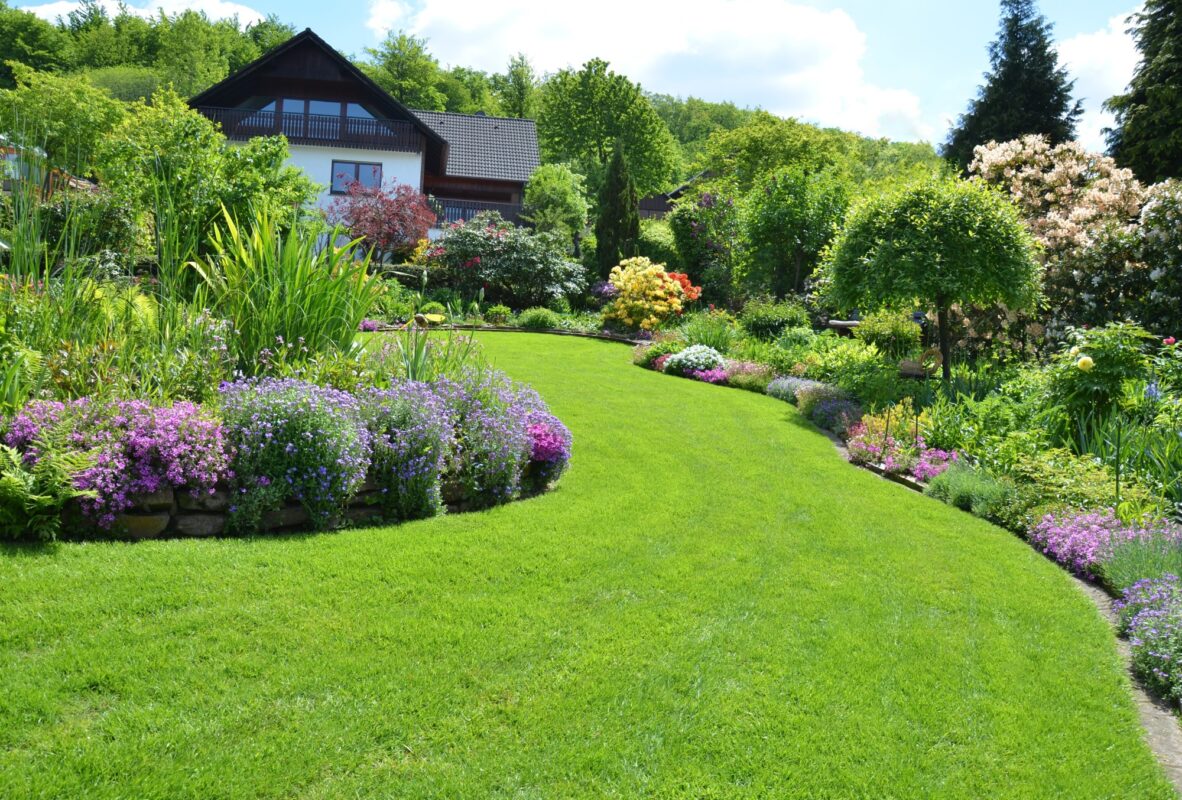
8 Curb Appeal Plants That Will Give Your Home That Wow Factor
Did you know homes with a strong curb appeal sell for 7% higher than comparable houses with a non-inviting exterior?
There are various ways to generate immediate effect and optimize space at the front of your house. It does not matter how small space you have out front. With good planning, you can make it both a delightful and useful area with curb appeal plants.
Curb appeal will help you sell your home, but there’s just so much you can do with your home’s physical structure.
Great Curb Appeal Plants for Your Home
You may be deciding to brighten your front garden, or perhaps you are thinking what steps do I take to sell my house? But, before planting that “For Sale” signage in your front yard, why not plant a ‘show’ garden to enhance your curb appeal.
So we have selected a few flower-bearing plants, some colorful shrubs, and some low maintenance options for you to learn about.
Create an assortment of colors in a full garden bed, or add color bursts in your yard by potting these quick flowers and plants, alternatively, in pots strategically placed for color splashes.
1. Salvia, Also Known As In Indigo Spires
Suppose you need an immediate color lift, plant Indigo Spires. It is a robust plant valued for its approximately 15-inch-long, giving winding spikes of dark purple or indigo flowers. It blooms from early in summer right through to fall.
You can encourage further blooming by snipping stem tips early in the growing season and deadheading the flower spike once it fades. Indigo Spires are quick growers and reach up to 4 feet high. Where the area is not hardy, it can be grown as an annual.
Plant indigo spires grow in full sun to light shade, and it has to have well-drained soil.
If planted in large pots, the indigo spires are movable to a protected area when the temperatures drop.
2. Portulaca or Purslane
Portulaca is known by many different names, such as garden purslane, pusley, little hogweed, and wild portulaca. Flower blossoms range from white, yellow, red, orange, pink, and purple. It thrives in full sun and sandy loose soil.
Purslane has succulent leaves and stems and is a fast-growing perennial herbaceous plant. The plant is a floor cover forming a mat covering approximately 3 feet in diameter. Based on the amount of water available, the plant may be very low-growing or upright up to 16′′ tall.
Bright flowering portulacas are beautiful in rock gardens, driveway strips, and hanging baskets. They are also used as edgings and ground covers; they do not need deadheading to encourage flowering.
3. Chrysanthemums or Mums
An easy-to-care herb available in various flower shapes and colors, including white, pink, lavender, and burgundy.
Mums are a national symbol of the fall season. It is a herbaceous and hardy perennial that is an easy addition to give a gorgeous pop of color to your autumn garden.
With a few simple tips, you can have a lush, beautiful garden display to help celebrate the changing of seasons.
4. Aruncus Dioicus or Goatsbeard
Also known as Bride’s-feathers or goat’s beard, this plant is a stunning perennial. It often reaches the height of 3-5 ft. The stems hold several double-or three-pinned-composite leaves. The leaf divisions are distinctly toothed.
It bears big, wispy groups of small, white flowers. The male flower produces more prolific show-stopper flowers.
Suitable for large shows of white blossoms in spring and summer, such as for shows on a bank or a wide garden corner.
5. Hydrangeas, the Old Classic
Hydrangeas are a scented, flowering shrub that favors partial sunlight, the flowers of which are fluffy pom-poms in white, blue, pink, purple, and red.
Though these flowering bushes are low-maintenance, careful maintenance can keep them in bloom longer. Typically, hydrangeas enjoy partial sunlight. Ideally, they like full sun in the morning, with shade in the afternoon.
Hydrangeas are perfect for diverse garden areas, from planting in groups to borders and in large pots.
6. Bougainvillea or the Paper Flower
Also known as the paper flower, this tree generally grows tiny cream flowers enclosed by brightly-colored leaves that are usually purple or mauve. However, there are a variety of colors.
Bougainvillea prefers a frost-free climate; however, existing plants tolerate intermittent frosts. They enjoy a sunny, sheltered patio or a terrace. The bougainvillea can be trained against a hot, sunny wall.
7. Aloe barbadensis or Aloe Vera
Commonly known as aloe vera, this plant has been cultivated for thousands of years. It’s one of the most commonly cultivated medicinal plants in the world.
Aloe vera likes a dry area and is good for rockeries, edges, and driveways.
8. Variegated Arboricola or Umbrella Tree
The umbrella tree is a tropical plant that has green and bright yellow leaves. It grows in both sun or shade and routinely watering but not frequent.
Variegated Arboricola is a prevalent plant in home gardens. The leaves are 1- to 2-inch and grow in tight groups. It can reach a height of 25 feet outdoors. The umbrella tree can be potted in medium to large pots and moved around.
Things to Consider to Create Curb Appeal
Plants have unique needs that need to be fulfilled to survive. So, remember these four things before you go shopping.
1. Research Your Climate and Type of Hardy Zone
It would be best if you become aware of which plants can tolerate your climate. So, you need to check your hardy zone. At your nursery, you will find labeled plants as ‘hardy’ for your particular climate.
If you are talking of putting your home on the market, this makes it far easier to find plants that will remain looking their best from the time you list your home to when the sale goes through.
2. Growing Conditions
It is important to know the plants’ light requirements. Planning and observing the sunshine conditions can help you decide where to put plants before you head out visiting nurseries.
Sunlight requirements are not the only details you need to give heed to on plant labels. Look at instructions, such as draining, roots, and size.
3. Your Landscaping Design
You can’t accomplish a perfect curb appeal by carelessly sticking a few shrubs and plants in your front yard. Careful planning is needed to get the big picture.
You need to design your garden using line, color choice, pattern, and height of plants.
You should visit your nursery for advice and research plants. It is easier to draw out a plan. That way, you can actually see the ‘end product.’
Grow Your Home’s Curb Appeal
Curb appeal provides potential homebuyers with their first view of a property before they even go inside. So, if you wish to increase your home’s value, concentrate on improving the curb appeal, especially with these curb appeal plants.
For more articles on the home, explore our blog.
